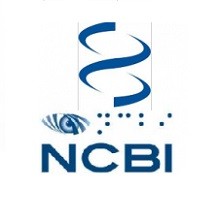
مطالعاتی برروی ماهیت پیوند هالوژنی به انضمام آنالیز نظریه اختلالی تقارن پذیر
چکیده
در سالهای اخیر مشخص شده است که بدلیل خواص بی نظیر پیوندهای هالوژنی ، این پیوندها ظرفیتهای بسیاری در توسعه ترکیبات دارویی و توسعه علم مواد دارند. در این مقاله ما فرایند تشکیل پیوند هالوژنی را با اجرای محاسبات روشهای آغازین برروی کمپلکسهای هالومتان – فرمالدئید و همچنین دیمرهای استخلاف شده آن با فلوئور F_n H_(3-n) CX…OH2 بررسی میکنیم . در این کمپلکسهای هالوژنی، اتم هالوژن X ،کلر، برم و ید میباشد. محاسبات روش خوشه جفت شده (CCSD(T)/aug-cc-PVTZ) نشان میدهند که انرژیهای پیوندی برای این نوع از برهمکنشها در محدوده ای بین 1.05-کیلوکالری برمول برای کمپلکس (H3CCl…OCH2) تا 3.72-کیلوکالری برمول برای کمپلکس (F3CCl…OCH2) قرار میگیرند. یکی از مهمترین دستاوردهای این مقاله، وابستگی بالای پیوندهای هالوژنی به هردو نوع برهمکنش الکتروستاتیک و پراکندگی برطبق تئوری اختلالی تقارن پذیر (SAPT) میباشد. همانطور که اندازه اتم هالوژن درگیر در پیوند هالوژنی بزرگتر میشود، قدرت برهمکنش نیز افزایش می یابد و جالبتر اینکه سهم برهمکنشهای الکتروستاتیک افزایش و سهم برهمکنشهای پراکندگی کاهش می یابند. وقتی اتم الکترونگاتیوی مثل فلوئور به مولکول هالومتان استخلاف شود، برهمکنشهای پیوند هالوژنی قویتر و الکتروستاتیک تر میشوند.
مقدمه
در سالهای اخیر، پیوندهای هالوژنی بعنوان برهمکنشی مهم در انواع مختلفی از سیستمهای فیزیکی شناخته شده اند و بویژه اینکه موضوع جالبی برای مطالعه در حوزه بیوشیمی و علم مواد میباشند. این برهمکنشها نقش بسزایی را در بسیاری از پدیده های بیوشیمیایی مثل کمپلکس شدن پروتئین- لیگاند ایفا میکنند و عامل بسیاری از ویژگیهای تازه کشف شده مواد بوده و به عقیده بسیاری از محققان این نوع از برهمکنشها در طراحی داروها و مواد جدید بسیار بااهمیت میباشند.
Abstract
In recent years it has been recognized that, because of their unique properties, halogen bonds have tremendous potential in the development of new pharmaceutical compounds and materials. In this study we investigate the phenomenon of halogen bonding by carrying out ab initio calculations on the halomethane-formaldehyde complexes as well as the fluorine substituted FnH3-nCX‚‚‚OCH2 dimers, where the halogen bonding halogens (X) are chlorine, bromine, and iodine. Coupled cluster (CCSD(T)/aug-cc-pVTZ) calculations indicate that the binding energies for these type of interactions lie in the range between -1.05 kcal/mol (H3CCl‚ ‚‚OCH2) and -3.72 kcal/mol (F3CI‚‚‚OCH2). One of the most important findings in this study is that, according to symmetry adapted perturbation theory (SAPT) analyses, halogen bonds are largely dependent on both electrostatic and dispersion type interactions. As the halogen atom involved in halogen bonding becomes larger the interaction strength for this type of interaction also gets larger and, interestingly, more electrostatic (and less dispersive) in character. Halogen bonding interactions also become stronger and more electrostatic upon substitution of (the very electronegative) fluorines onto the halomethane molecule.
Introduction
In recent years halogen bonding has been implicated as an important type of interaction in many different types of physical systems and are especially interesting within the fields of biochemistry1-11 and material science.12-23 These interactions play roles in a wide variety of biochemical phenomena such as protein-ligand complexation1,2,4-6,9,19 and are responsible for many novel properties of materials;14,17,19-21 these types of interactions, many believe, promise to be of great importance in the design of novel drugs and materials.
چکیده
مقدمه
روشها
نتایج و بحث
نتیجه گیری
Abstract
Introduction
Methods
Results and Discussion
Conclusions
- ترجمه فارسی مقاله با فرمت ورد (word) با قابلیت ویرایش، بدون آرم سایت ای ترجمه
- ترجمه فارسی مقاله با فرمت pdf، بدون آرم سایت ای ترجمه
